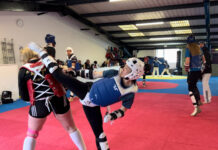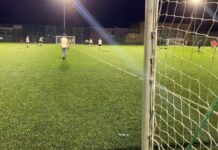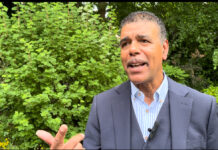London 2012 changed the conditions for those with disabilities wishing to participate in sport forever. Since 2005 when Britain were awarded the Olympics and Paralympics, participation figures steadily grew for disability sport, and after the game’s, participation percentages reached an all-time high.
Despite the growth, according to Sport England in 2018, weekly participation in sport stands at still just 17% for people with a “long term limiting illness, disability or infirmity” which is still far too low when compared to the 34% of non-disabled people in the UK which participate in sport weekly.
What is it then that prevents disabled people from taking art in sport? Well 73% of disabled adults have said they faced some kind of barrier to taking part in disability sport and there are three main contributing factors. They are physical barriers, logistical issues and psychological blocks.
Physically, where there have been some advancements in this area, there is still a lot that needs to be done to make all health and leisure centres accessible and have relevant activities for those with a disability. The equipment and changes to facilities can often be expensive, so owners are reluctant to make the changes – it is clear that the government need to be doing more to fund disability sport but that’s an issue for another time.
Logistically, even if health and leisure centres do have the facilities, like many do, they have often not been implemented effectively. Often leisure centres are less than willing to use these facilities as they were so expensive, they don’t want to risk them getting broken – they are more concerned with the box ticking and showing of that they have these facilities than getting them used… Also, they commonly charge and arm and a leg to use the facilities they may have. Again, perhaps this is a deterrent to keep them safe.
On this issue, Adam Blaze, Sport England Lead for Disability said: “Many leisure operators and sports clubs want to be accessible to all, but some aren’t sure about cost implications or what to provide. Sport England are working closely with the sport sector and disability organisations to help address this.
“We’ve made significant investment to provide more accessible facilities, projects and activities. It’s also important disabled people see themselves represented in the sports industry, which is why we’re funding Aspire’s award-winning Instructability programme which will enable disabled people to develop a career in the fitness industry.”
Also, when it comes to logistics, in some parts of the country, there’s nothing around for miles for people looking to participate in disability sport. In major towns and cities, the accessibility is quite good but can’t be said for everywhere. ParaSport is a great website by the way for looking for disability sport events near you. You just type in your postcode and it brings up everything in your area – a very helpful site.
Recently, UK Sport has announced it is investing £74.9m into 18 summer Paralympic sports for Tokyo 2020, an increase of over £2m since Rio 2016. UK Sport has also invested £3.9m into the recent PyeongChang 2014-2018 winter Paralympic cycle, an increase of over £3m since Sochi 2014. Yet again it looks like non-elite disability will not receive the funding it needs to improve participation.
The final barrier that stops participation seems to be the psychological concern of those wanting too, who are worried about external attitudes towards how they may be perceived – they don’t want to be judged or made to feel like a burden.
For non-disabled people reading this, it is comparable to the anxiety you may feel about joining a gym or going for the first time. You worry that everybody is going to be looking and you and laughing at you and you’ll be in people’s way. It is a very natural way to feel.
According to the Activity Alliance, psychological barriers play the biggest role in preventing disabled people from taking part in sport, with participation leading to vital mental health improvements by providing an environment to interact with other people outside of the home.
“We have seen from talking to parents, teachers and carers the impact for a lot of disabled kids for just being welcomed into a club and to play, it’s massive. There is such a low bar,” adds Hardie.
“The Papworth Trust report on disability shows that a lot of kids feel very isolated, because they don’t have quite the same opportunities as non-disabled kids and can end up a bit cooped up in the house, which leads to a downward spiral of mental and physical health that also impacts siblings and parents.
“When parents take kids along, they see them interacting and socialising, which quite often they are not aware their children can do, and get to meet like-minded parents in a similar position. A lot of them speak emotionally about what a big impact it has.”
Worryingly, the number of people participating in disability sport has stopped steadily increasing, and is now levelling out. This is a problem.
Multiple time Paralympic champion Baroness Grey-Thompson believes: “There is no simple answer to increase the number of disabled people taking part in sport and physical activity. It’s crucial we talk about participation levels and use the latest data as a starting point to work from – it’s a sign of what more needs to be done.
“The barriers range from accessibility to staff training, but the good news is the physical activity sector is committed to delivering inclusive services for all. With ukactive, the not-for-profit body comprised of members and partners from across the UK active lifestyle sector, we are working with Sport England on the ‘Everyone Can’ project to create a cultural shift and change perceptions around disabled people’s participation in physical activity.”
Pic by Senior Airman Benjamin Cooper (Creative Commons)














